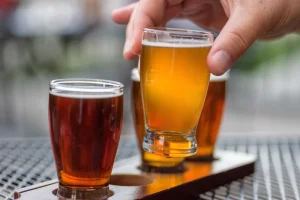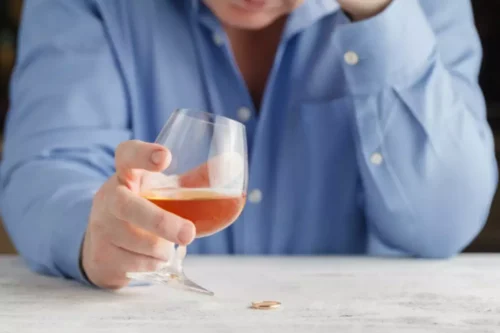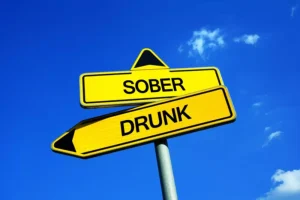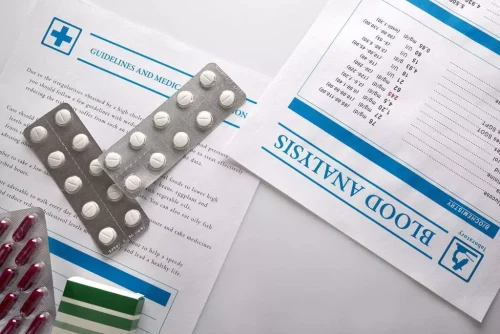
Emerging evidence suggests that solitary drinking may be an important early risk marker for alcohol use disorder. The current paper is the first meta-analysis and systematic review on adolescent and young adult solitary drinking to examine associations between solitary drinking and increased alcohol consumption, alcohol problems, and drinking to cope motives. Conger’s (1956) TRT was never quite as simple as it often has been portrayed. For instance, although he concluded that alcohol usually will reduce tension, he also acknowledged that in some cases alcohol might increase tension—in circumstances where “restraining tendencies are initially so great that a person never comes close enough to … be aroused” (p. 303).
Distinct Mechanisms of Risk
Solitary drinking was defined in most studies as drinking while alone (i.e. drinking without others present) (e.g. [7,8,10]). In some studies, solitary drinking also included drinking with non-drinking others (e.g. [6,18,27]) and/or among non-interacting others (e.g. [28–31]). Researchers often dichotomized solitary drinking as presence or absence of this versus social-only drinking (e.g. [5,6]), but some also reported solitary drinking quantity (e.g. [15]), frequency (e.g. [14,32]) and/or frequency of heavy social drinking and drinking problem solitary drinking (e.g. [9,15]). Alternatively, other researchers assessed solitary drinking as a percentage of total drinking episodes (e.g. [7,8,10]). Importantly, the latter may decrease confounding overall drinking frequency with solitary drinking (i.e. those who drink more often, have more opportunities to drink in social and solitary settings), which can be problematic when only inquiring about solitary drinking frequency. Mutual-support groups provide peer support for stopping or reducing drinking.
- This research raises questions regarding the mechanisms by which social factors increase risk for problematic drinking among 7-repeat carriers (Park et al., 2011; see also; Mrug & Windle, 2014).
- Most of this was in the form of whiskey (which, thanks to grain surpluses, was sometimes cheaper than milk), and most of it was drunk at home.
- My doctor’s nagging notwithstanding, there is a big, big difference between the kind of drinking that will give you cirrhosis and the kind that a great majority of Americans do.
- Alcohol is available everywhere, from bars and restaurants to people’s homes.
More in Addiction

Research indicates that placebo beverages can lead individuals to draw upon greater cognitive resources, and in some cases improve performance (Bailey, Bartholow, Saults, & Lust, 2014; Marczinski & Fillmore, 2005; Saults et al., 2007; Vogle-Sprott & Fillmore, 1999). In addition, nonpharmacological drinking factors still occasionally appear to affect social behavior (Hull & Bond, 1986; Sayette, Dimoff, Levine, Moreland, & Votruba-Drzal, 2012b), and research is needed to evaluate how expectancies related to drinking may affect group processes. Work by Goldman et al. (e.g., Moltisanti, Below, Brandon, & Goldman, 2013) has begun to examine the impact of alcohol expectancy primes on social bonding.
- Without them, Slingerland doubts that he would have begun exploring religion’s evolutionary functions, much less have written Drunk.
- Accordingly, one cannot merely assume that the default unit of analysis is the person.
- If you would like to learn more, we invite you to contact us today.
- Between 2010 and 2022, people in 500 homes on the reserve south of Edmonton lived with 331 boil-water advisories.
Definitions and measures of solitary drinking
The earlier you address and tackle an addiction to alcohol, the better. If someone you love has signs of unhealthy alcohol use, treat alcoholism as a disease, not as a moral failure or lack of willpower. Be understanding, but don’t be an enabler by protecting or lying for a person with an alcohol use disorder or denying that the problem exists. Respect the recovered alcoholic’s choice to stay away from alcohol.
- Expose your teen to healthy hobbies and activities, such as team sports, Scouts, and after-school clubs.
- Brief Interventions are short, one-on-one or small-group counseling sessions that are time limited.
- Thus, social drinking paradigms might serve to reveal sex differences in alcohol reward sensitivity.
- Sometimes a drinking problem is triggered by major life changes that cause depression, isolation, boredom, and loneliness.
When you drink heavily, your body gets used to the alcohol and experiences withdrawal symptoms if it’s taken away. Do you have to drink a lot more than you used to in order to get buzzed or to feel relaxed? These are signs of tolerance, which can be an early warning sign of alcoholism. Tolerance means that, over time, you need more and more alcohol to feel the same effects. Many drinking problems start when people use alcohol to self-soothe and relieve stress (otherwise known as self-medicating). Getting drunk after every stressful day, for example, or reaching for a bottle every time you have an argument with your spouse or boss.
Recreational drinking and social drinking are common terms people use to refer to drinking to have fun. Regardless of the circumstances in which alcohol is consumed (i.e., at a party or solo), in the United States drinking is considered a part of a healthy lifestyle when it’s done in moderation. If someone goes to parties nearly every day, they may be consuming a lot more alcohol than is healthy despite meeting the dictionary definition of a social drinker. My inner optimist imagines a https://ecosoberhouse.com/ new world in which, reminded of how much we miss joy and fun and other people, we embrace all kinds of socially connecting activities, including eating and drinking together—while also forswearing unhealthy habits we may have acquired in isolation. Yet the version that went into effect in 1920 in the United States was by far the most sweeping approach adopted by any country, and the most famous example of the all-or-nothing approach to alcohol that has dogged us for the past century.


This definition is helpful as a starting point, but it doesn’t tell us anything about how much alcohol a person is actually drinking. Throughout history, drinking has provided a social and psychological service. At a moment when friendships seem more attenuated than ever, maybe it can do so again.
- People who transition from social drinkers to problem drinkers may be able to stop without assistance, but they may find that it’s too big of a challenge to conquer on their own.
- In particular, I thank Kasey Creswell and Catharine Fairbairn, who played critical roles analyzing the group formation data and investigating potential mediators and moderators of the effects of alcohol on emotion.
- Social drinking, when done responsibly and in moderation, can have both benefits and risks to an individual´s well-being.
- Narrow learning-based analyses of the alcohol—emotion association have yielded to approaches that integrate advances derived from the study of cognition, affect, and social processes.
- If you know someone who has firsthand knowledge of a program, it may help to ask about their personal experience.
There are a few telltale signs that you might need to adjust your approach to social drinking to semi or full sobriety. Denial is one of the biggest obstacles to getting help for alcohol abuse and alcoholism. The desire to drink is so strong that the mind finds many ways to rationalize drinking, even when the consequences are obvious. By keeping you from looking honestly at your behavior and its negative effects, denial also exacerbates alcohol-related problems with work, finances, and relationships. Despite the potentially lethal damage that heavy drinking inflicts on the body—including cancer, heart problems, and liver disease—the social consequences can be just as devastating.

Social Effects of Drinking Alcohol


دیدگاه شما با موفقیت ثبت شد.